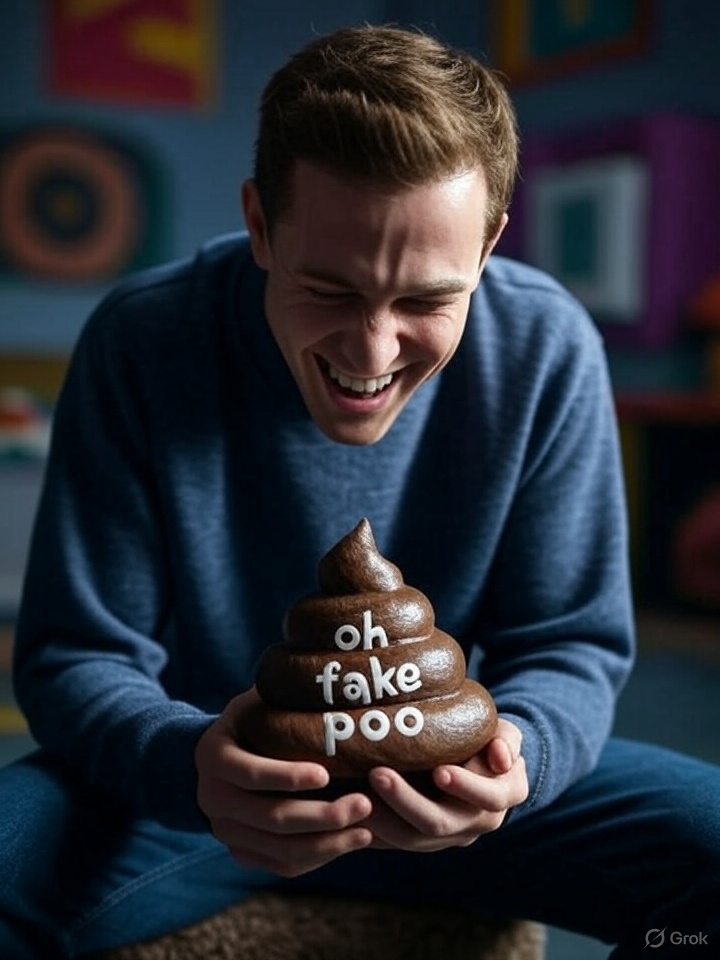So I paid my $2 and the guy said, “Once upon a time there was this lobster…
Okay, here’s my attempt at a “Joke Poo” version of the lobster tail joke:
Joke Poo: The Psychic Pizza
Today I ordered from this new pizzeria that advertised “Psychic Pizzas – Large, any topping: $5!”
So, I paid my $5 and the delivery guy said, “You’re going to enjoy this pepperoni… in about 30 minutes.”
Alright, let’s dissect this crustacean comedy!
Joke Breakdown:
- Premise: The setup creates an expectation of purchasing actual lobster tails at a ridiculously low price ($2).
- Twist/Punchline: The low price is explained by the “product” being a story about a lobster, not the actual lobster tail itself. It’s a bait-and-switch reliant on wordplay and misleading advertising.
- Humor Type: This falls under the category of irony, misdirection, and a touch of absurdity. The humor lies in the unexpected and the breaking of the established expectation.
Key Elements:
- Lobster: The star of the show (or story).
- Low Price ($2): The element that sets the expectation and then subverts it.
- Roadside Stand: Implies a potentially less-than-reputable business, adding to the believability (and humor) of the scam.
- Storytelling: The punchline hinges on the guy giving a “lobster tale”.
Enrichment Material (Lobster Facts):
- Lobsters can live a surprisingly long time. Some species can live over 100 years!
- Lobster blood is blue due to the presence of hemocyanin, which uses copper to transport oxygen, rather than iron like in human blood.
- Lobsters taste with their legs. They have chemoreceptors in their legs and antennae that allow them to “taste” their environment.
New Humor Creation:
1. New Joke:
“I went back to that roadside stand that sold lobster tales for $2. Figured I’d try to get some sequels. The guy said, ‘Okay, $2. Once upon a time, the lobster got a mortgage…'”
Why it works: This builds upon the original joke by referencing the expectation it created. The new punchline adds a layer of absurdity by contrasting the majestic lobster with a mundane, modern problem.
2. Witty Observation:
“That roadside lobster tale stand? It’s the perfect example of why you should always read the fine print… even if it’s scrawled on a sun-faded cardboard sign with crayon.”
Why it works: This comment draws a connection between the joke and real-world situations where people are misled by deceptive marketing.
3. Amusing “Did You Know”:
“Did you know lobsters taste with their legs? Which makes you wonder if that roadside stand owner isn’t just selling really, really long lobster-flavored leg-licking sessions. Still cheaper than a real lobster tail.”
Why it works: This combines the lobster fact with the premise of the original joke, adding a bizarre and unsettling (but hopefully funny) twist.
4. New Joke:
I went back to that roadside stand, hoping to get a real lobster for once. The sign now said, “Blue Lobster Blood – $5.” I was excited, thinking I’d finally struck gold! Paid the five bucks, and the guy handed me a cup of blue raspberry Slurpee. “It’s just like lobster blood… blue!”
Why it works: This joke plays on the obscure lobster blood fact, creating another expectation before another bait and switch.
Hopefully, these suggestions are both humorous and enrich the original joke! Let me know if you’d like more lobster-related laughter.


